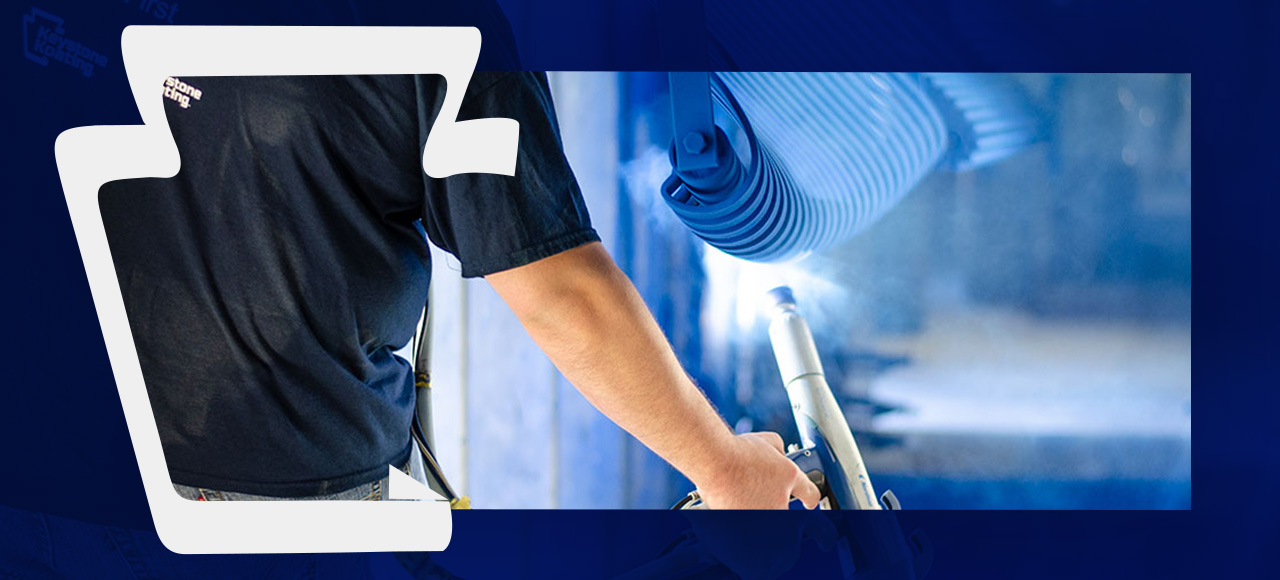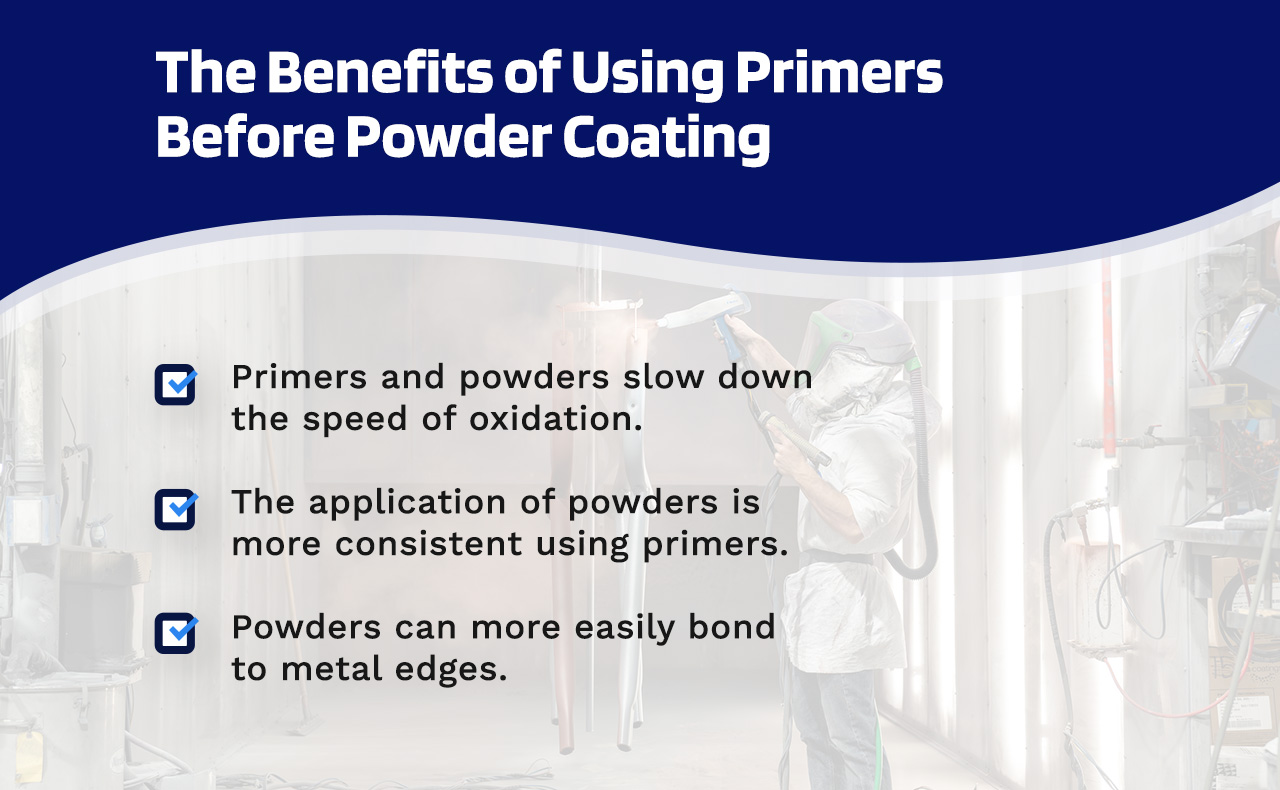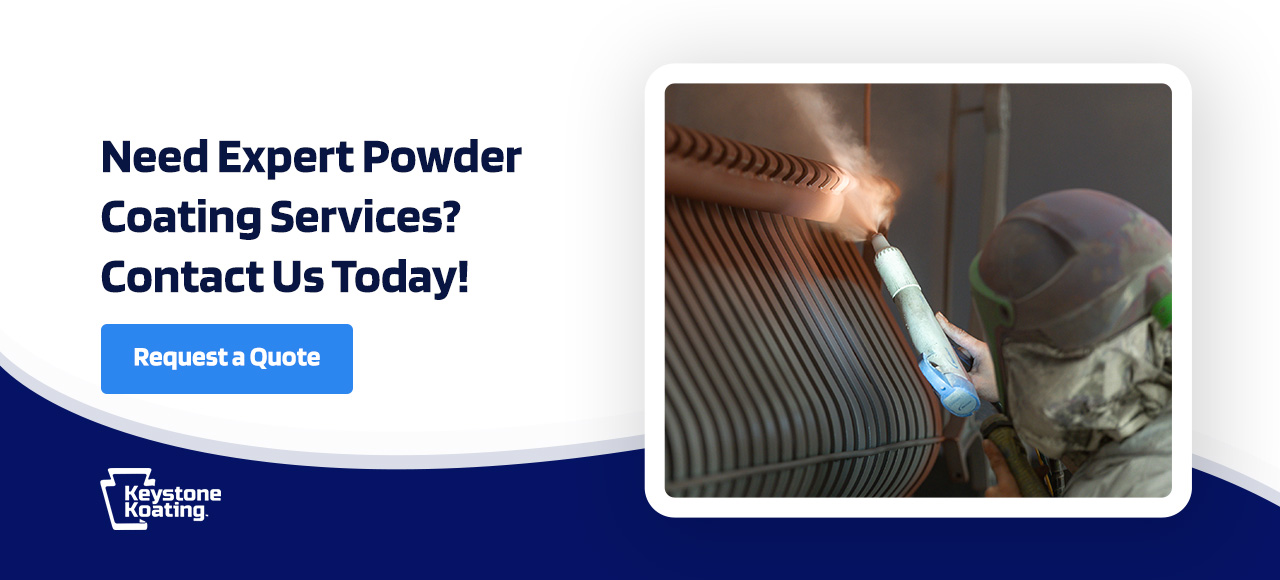
Updated June 24, 2024. Originally published March 16, 2021.
Industrial manufacturers, builders and consumers require metal products that keep their appearance. Depending on use, certain types of metals can degrade when exposed to outdoor elements. However, powder coating services help block out moisture, salts and oils from interfering with a surface.
The process of powder coating calls for attention to detail, and the slightest miscalculation can influence the overall quality of a metal’s finish. Using a primer is one way powder coating professionals ensure the long-term performance of your product’s powder coating.
Table of Contents
- The Purpose of Powder Coating Primers
- The Benefits of Using Primers Before Powder Coating
- Production Materials and Adding Powder Coat Primers
- Request a Quote for Powder Coating Services Today
The Purpose of Powder Coating Primers
Primers are effective in preparing metals for outdoor installations and aquatic environments. Making sure that powder coating bonds to steel, iron, aluminum products and more helps combat corrosion. If metal surfaces will be exposed to high levels of humidity, corrosive environments or potential scratching, speak to a company that has expertise in using primers to ensure long-term durability.
The team at Keystone Koating uses a zinc-rich primer on steel products. This zinc is similar in nature to galvanizing. If, during use, the powder coating is scratched, the zinc will actually act as a sacrificial layer and prevent the corrosion from creeping underneath the powder coating. On aluminum products, Keystone Koating uses a non-zinc primer which is an epoxy, as zinc is actually detrimental to aluminum.
Both primers prevent corrosion from creeping underneath the powder coating and weakening the bond between the metal substrate and powder coating.
The Benefits of Using Primers Before Powder Coating
At Keystone Koating, you can add zinc-rich or non-zinc primers to your powder coating service. After blasting the metal surfaces, primers can be applied for the following advantages:
- Durability: Primers and powders slow down the speed of oxidation by adding a barrier between the metal and the coating. Even if the coating breaks down over time, the primer creates an additional protection layer.
- Uniformity: The application of powders is more consistent using primers. A primer also smooths the coated surface to create a more even base, improving the finish quality.
- Adhesion: Powders can more easily bond to metal edges. A primer creates a strong bond between the material being coated and the powder coating, which may reduce peeling, flaking or chipping.
- Vibrancy: Primers create a smooth and consistent surface under the powder coating. They allow for more consistent color tones and better vibrancy and gloss.
- Savings: While primer adds a step to the coating process, it can make coatings last longer. A long-lasting coating gives you a better return on your investment by reducing the need for recoating or repairs.
- Compatibility: Primers work with particular substrates and powder coatings, creating a stronger bond, which helps the powder coating perform better over time.
Production Materials and Adding Powder Coat Primers
Does powder coating truly need a primer base? The answer to this question ultimately depends on the job. Metals prone to rust, such as iron and steel, can benefit from the extra precaution to ensure products can resist flaking and puncturing in the long term. Here are common metals that Keystone Koating will prime before spraying a powder coat:
Should You Use Primer for Powder Coating?
Not all powder coating applications require a primer. In some cases, a primer adds necessary protection, but in others, a primer might reduce the quality of the result. Here are a few factors to consider when determining whether a product needs primer:
- Environment: Primers add protection for harsh environments with temperature variations, high humidity, sunlight exposure or chemicals. They promote a stronger bond and protect against corrosion.
- Material: Metals that rust more easily should be treated with primer as an additional layer of protection. Primer can prevent water from reaching the metal’s surface.
- Appearance: Whether the metal’s surface has existing defects or you want a more vibrant finish, a primer creates a smooth, even surface for a higher-quality finish.
- Coating type: Certain coatings, like wrinkle finishes, perform better over bare metal. Applying a primer can lead to inconsistent textures and a lower-quality result.
A few general guidelines may allow you to determine whether your project requires a coating. If you need more clarification, you can ask an expert. They can provide specific advice based on your application. They’ll account for the details to give valuable insights based on their experience and knowledge.
Other Ways to Ensure Quality Powder Coating
Primer provides a valuable protection layer and ensures long-lasting durability. Sometimes, the primer may not work for a particular application, or you may desire additional protection. Sandblasting removes rust, oil and other substances that may interfere with coating to create a stronger bond. In some cases, a product may undergo a pretreatment process to clear contaminants. Besides applying primer, coating experts may use various methods to prepare a surface and create a stronger bond.
Request a Quote for Powder Coating Services Today
The knowledgeable team at Keystone Koating will help you make the right decision for your powder coating needs. We can provide recommendations after learning more about your expectations for product performance and appearance.
Our team has over 30 years of experience in the powder coating industry. With our two facilities in central Pennsylvania, we can take on projects of various sizes with our three production lines and three batch booths. Partner with a team that guides you through each step of the powder coating process from start to finish.
Get a quote for our services by completing our contact form today.




